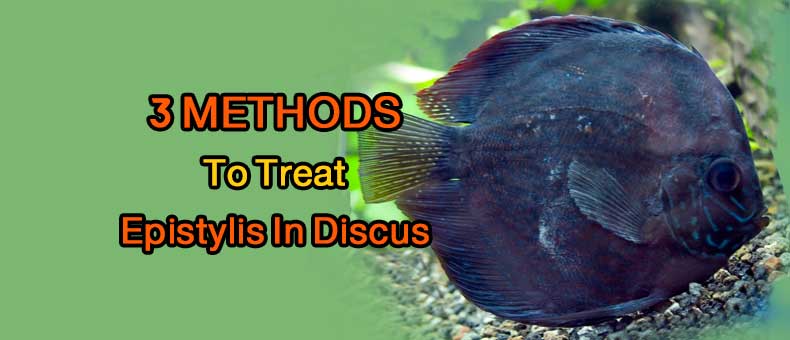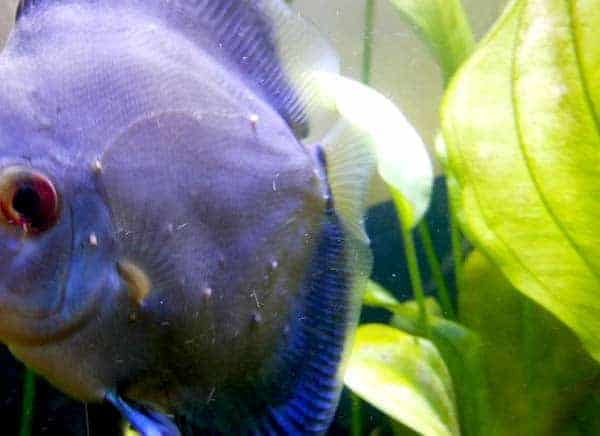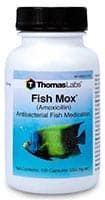
Epistylis is an organism seen in many aquariums and on most fishes including Discus. It is regarded as an opportunistic organism that feeds on bacteria inside the water column and uses the fish to hold onto.
They are a Genus of single-celled protozoans. These tiny, immobile organisms sometimes attach themselves to the body of fishes, especially the hard surface like their fin rays.

Table of Contents
- Symptoms of Epistylis
- Causes of Epistylis
- 7 Differences Between Epistylis and Ich
- Discus Epistylis Treatment Methods
- Discus Epistylis Future Prevention Tips
- Conclusion
Symptoms of Epistylis
When the skin or fins is injured, this makes the fish liable to get an Epistylis infection with symptoms like:
- Cotton-like structures that look much like a fungal infection.
- Red sore and opercular perforation.
- Parts of the body affected may include skin and/or fins, gills, eyes, belly.
- Swimming behavior.
- And some other behaviors.
Causes of Epistylis
Epistylis is a sign of a serious bacterial infection. It occurs regularly in newly set up aquariums with dull water, inadequate water circulation, aeration, and filtration. Fishes such as Discus are easily affected by epistylis and die quickly from bacterial infection.
A common case is when a bacterium attacks the fish’s skin, causing “slime coat syndrome.” Then secondary epistylis attaches to the fish and feeds on the bacteria being shed by the skin infection.
Causes of epistylis may include:
- The water may have a higher bacterium count because of poor aeration or filtration in the aquarium.
- The aquarium may harbor bacteria just above the substrate due to poor water circulation.
- Some aquaria may have a large substrate where food is trapped in the substrate. This rotting food will bring about bacteria disease.
7 Differences Between Epistylis and Ich
Below is a list stating the 7 differences between Ich and Epistylis:
| ICH | EPISTYLIS |
| Uniform Round Size Like A Grain Of Salt | Varying Rough Size |
| Pure Ceiling White | Translucent Grey/White |
| Flat Against Fish | Sticks Out into Water |
| All Fish Surface Will Have Dots | Patchy Coverage on Fish |
| Rarely on The Eyes | Common on The Eyes |
| Mostly Treated With High Water Temperatures | Thrive At Higher Temperatures |
| Occurs In Any Fish | Occurs Mostly In Fish With Fin Rot |
In a survey carried out in some aquaria, the members of the sampled aquaria were asked: “about the cases of Ich they have had in their aquariums, how many fish died?”. There were about seven replies. Three of them had fishes that died.
All these three instances were the ones they added new fishes to their aquarium. This shows Ich is just rarely fatal in the home aquarium.
Below is a video showing live Epistylis swimming
Ich: is a white spot that does not stick out from the fish. Ich is sometimes the size of a grain of salt.
Epistylis: Can be seen as white dots sometimes. They are larger than the white dots of Ich, and they stick out in the water. They are usually uneven on the fish than uniform. This seems to be very often in small fishes like a Discus.
Meanwhile, the bacteria infecting the fins are feeding on the epistylis.
Discus Epistylis Treatment Methods
There are different ways with their various steps to treating epistylis. Below are some of them
[METHOD1] – Treatment By Food
Steps using their food as a treatment:
[1] – Heating Water With The Medication
Heating a small quantity (1/4) of water in the microwave, then blending 1/4 ounce of animal-derived gelatin into the water and vigorously stirring it.
[2] – Mixing Fish Food
Taking two tablespoons of dry fish food and mixing it with the hot water (just a little), then continue to add hot water/gelatin till you get a paste-like consistency.
[3] – Adding Medication
Epistylis bacterial disease need to be hit with a broad-spectrum antibiotic such as:
Thomas Labs Fish Mox

You can add (1/16 teaspoon) of the medication to the mud, then Mix and mash it vigorously.
[4] – Prepare For Refrigeration
Spread it into a pancake on a tray or plastic film, then put it in the refrigerator.
[5] – Feeding The Combination
Feeding should go at least for a week and more if the fishes don’t respond.
[METHOD2] – Treatment By Salt Bath
Treatment steps using salt bath:
[1] – Prepare A 3% Salt Bath
(Ocean salt concentration) repeated every 24 hours can be very effective.
[2] – Put The Discus In A 3% Salt Bath
For 30 seconds to ten minutes keep the Discus in the bath.
Salt added to the aquarium helps heal injuries, kills some parasites, improves the formation of a lime coating, and promotes gill function.
Complementary Treatments
- Improving biofiltration of the aquarium
- Applying antibiotics inside the fishes’ food
- Improving the circulation of water in the aquarium
- Aeration as well will remove all the bacterium epistylis feed on.
You can also try some direct treatments to remove the epistylis organism. But These four are treatments of choice.
Discus Epistylis Future Prevention Tips
- Provide good aeration or filtration in the aquarium.
- Provide good water circulation.
- Clean your tank regularly to prevent bacteria build-ups.
- Take proper steps when adding new Discus to your tank.
- In other words, providing a healthy environment for Discus.
Conclusion
As stated earlier, Epistylis feeds on the bacteria in the fish’s skin mucus rather than feed on the fish itself. Epistylis is usually accompanied by pathogenic bacteria, either as septicemia, fin rot, or slime coat disease.
The symptomless bacterial infection is typically the organisms that kill the fish, not epistylis. Therefore, it is important to treat the fish with a broad spectrum of antibiotics in their food and only in the food. Good circulation of water and crystal-clear water, Over-filtration, and over aeration should be the goal of a good hobbyist when you achieve a Discus healthy environment.
